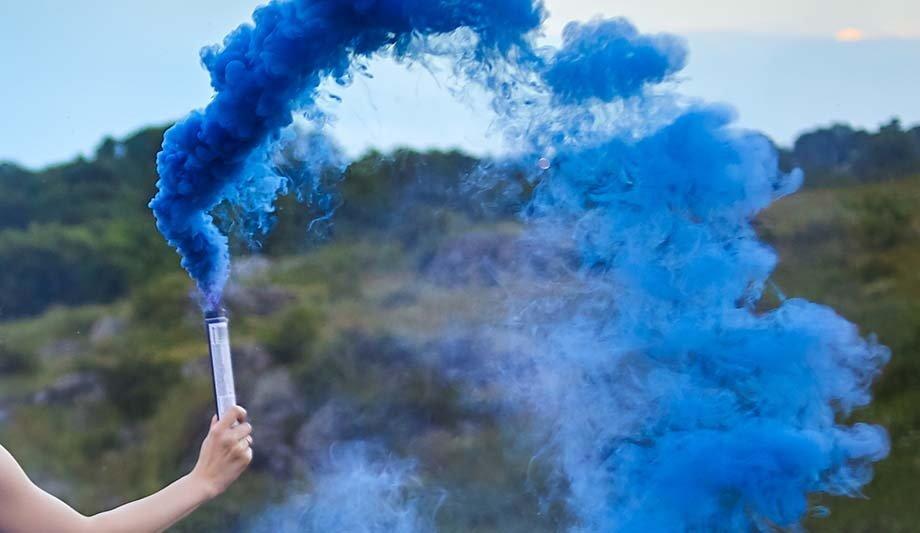An explosion of blue-colored smoke on Sept. 5, 2020 in Yucalpa, California, was the beginning of a large wildfire in El Dorado Ranch Park. The pyrotechnic device was essentially a smoke bomb designed to send plumes of pink or blue smoke rising into the air, designating the gender of an expected baby.
The expectant dad had packed the target with a highly explosive substance called Tannerite and shot it with a high-powered rifle. The target was designed to explode in pink or blue to reveal whether the couple was expecting a boy or a girl.
Flammable foliage
When the device ignited, so did the dry, wild grasses growing up to 4 feet tall in the meadow at the park, 80 miles east of Los Angeles. In the peak of summer, Southern California foliage is extremely flammable, and there were already fires burning across the state.
After being active for 11 days, the fire had affected 18,506 acres and was 63% contained.
The family that sparked the fire sought to put down the flames using water bottles. Then they called 911. The responsible individuals were still at the park when firemen arrived, and there are also surveillance cameras.
Wildfire Spread And Evacuation
The fire spread from the park to the north on to Yucalpa Ridge that separates Mountain Home Village and Forest Falls from the City of Yucalpa. The fire threatened a nearby residential neighborhood, and some 21,000 people were evacuated.
After being active for 11 days, the fire had affected 18,506 acres and was 63% contained.
The pyrotechnic show was a variation on the popular trend of gender reveal parties, which seek to announce the gender of an expected infant in increasingly (and competitively) colorful and/or dramatic ways. The parties are often featured prominently on social media.
Rising temperatures
Also contributing to the fire was recent weather in California, whose terrain was scorching in record-breaking temperatures as high as 120 degrees F in early September.
The California Department of Forestry and Fire Protection (CAL Fire) reminds the public that, with the dry conditions and critical fire weather, it does not take much to start a wildfire, and those responsible for starting fires due to negligence or illegal activity can be held financially and criminally responsible.
Natural conditions and human activity
Natural conditions are central to causing wildfires, although human activity can provide the triggers
Natural conditions are central to causing wildfires, although human activity can provide the triggers, including downed power lines, sparks from tire blowouts, and barbecues that get out of control. The pivotal gender-reveal part is just the latest example.
If not for the increasingly dry and scorched conditions that make wildfire so easy to ignite, such human events would be much less consequential.
With thousands of acres of wildfire raging across California, the cause of one wildfire seems less important in the overall scheme of things. However, the event does emphasize how seemingly minor events can have a very large impact.
Lightning and fireworks
Another cause of recent wildfires was lightning with more than 10,000 lightning strikes sparking 376 fires on Aug 16 and 17, 2020.
In a season of wildfires, use of fireworks, for whatever reason, is a particular risk. Fireworks cause an average of 18,500 fires each year in the United States. Of those, about 1,200 injuries are from less powerful devices such as small firecrackers and sparklers.

